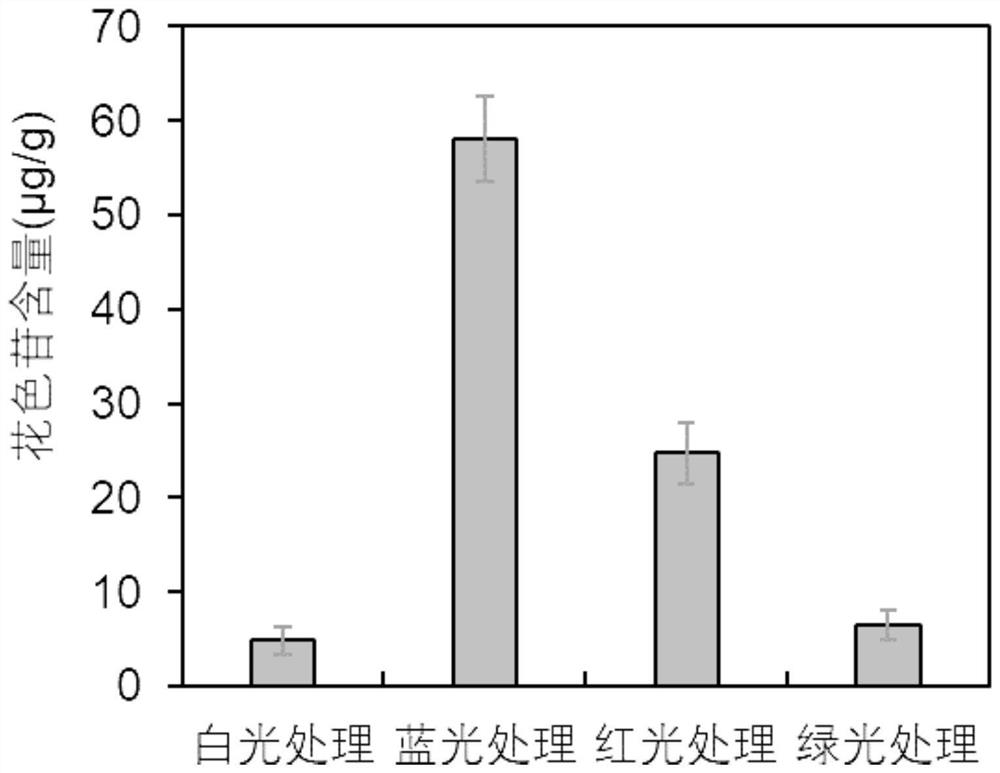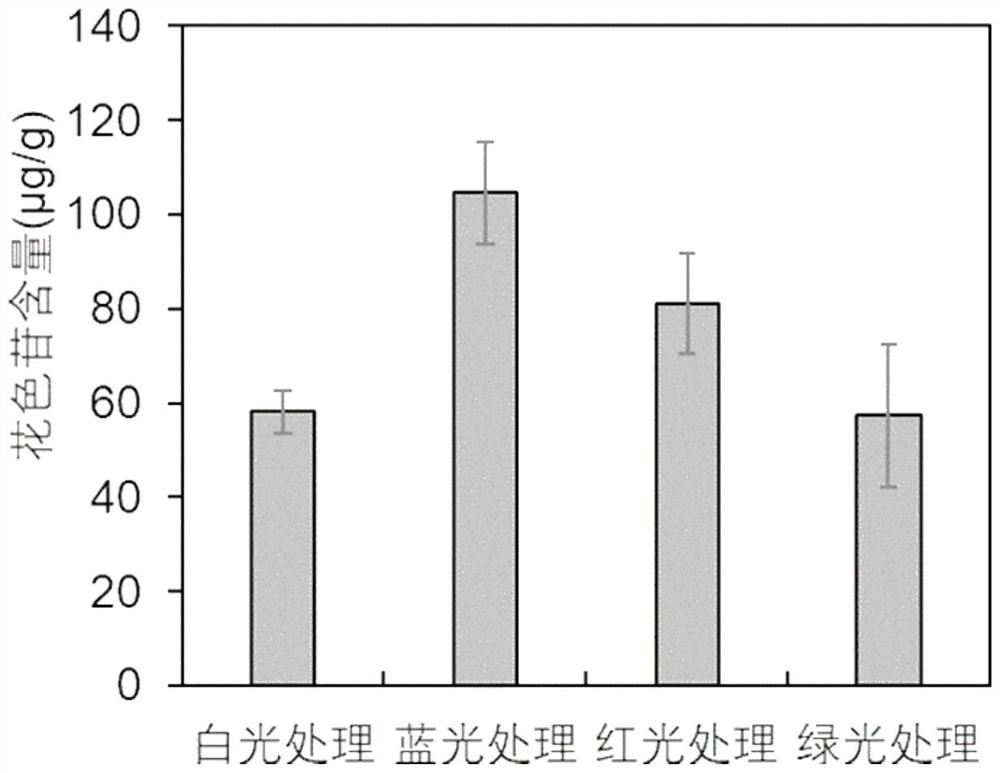Method for improving ornamental value of flower color of agapanthus praecox
An ornamental and Agacia lotus technology, which is applied in the field of improving the ornamental color of Agacia japonica to achieve the effects of improving the ornamental quality, the cultivation environment is easy to obtain, and the cultivation time is short.
- Summary
- Abstract
- Description
- Claims
- Application Information
AI Technical Summary
Problems solved by technology
Method used
Image
Examples
Embodiment 1
[0031] In November 2019, I purchased perennial plants of Agapanthus abatana from the company, and placed them in a cultivation room for white light cultivation. The cultivation conditions were 20°C, 16h light / 8h dark, and the light intensity was 1500lx. The scapes of Agapanthus scapes were pulled out until the beginning of March 2021. Buds form. Then in March 2021, the following experiments were carried out in the light incubator.
[0032] On March 16, 2021, the buds of Agapanthus are about to crack. Transfer the Agapanthus plants to a single blue light (wavelength 440nm-470nm, light intensity 1500lx) incubator for cultivation. The cultivation environment is constant temperature 25°C, photoperiod 16h light and 8h dark. Take it out after 7 days of cultivation, take pictures and record and detect the content of anthocyanins in the petals. Put 1g of petals in 5mL of methanol (containing 10% hydrochloric acid) solution and extract at 4°C for 12h. Take two 2mL anthocyanin extrac...
Embodiment 2
[0035] The steps of this example are the same as those of Example 1, except that the Agapanthus plants with buds are transferred to a single red light (wavelength is 640nm-660nm, light intensity is 1500lx) incubator for cultivation, and the cultivation environment is constant temperature 25°C, photoperiod 16h light and 8h dark. Take it out after 7 days of cultivation, take pictures and record and detect the content of anthocyanins in the petals, the detection method is the same as that in Example 1.
[0036] The results showed that the coloring speed of Agapanthus flowers treated with red light was slightly faster than that treated with white light, but the coloring area of petals was uneven, and the color of flowers was inconsistent, but the color hue and saturation of flowers were similar to those of white light. Such as figure 1 As shown, the anthocyanin content in the petals of Agapanthus treated with red light was 24.78 μg / g, while that in the petals cultured under whi...
Embodiment 3
[0038] The procedure of this example is the same as that of Example 1, except that a single blue light (wavelength 440nm-470nm, light intensity 1500lx) is cultured for 7 days and transferred to white light (wavelength 400-760nm, light intensity 1500lx) for cultivation Cultivate in a box with a constant temperature of 25°C and a photoperiod of 16 hours in light and 8 hours in darkness. After continuing to cultivate for 7 days, take it out, take pictures and record it, and detect the content of anthocyanins in the petals. The detection method is the same as in Example 1.
[0039] The results showed that after the Agapanthus plants cultured in the blue light environment were transferred to the white light culture, the Agapanthus flowers continued to maintain a darker blue color, and the coloring area and the number of colored flowers were more than those of the petals without blue light treatment. Such as figure 2 As shown, after testing, the anthocyanin content in Agapanthus pe...
PUM
 Login to View More
Login to View More Abstract
Description
Claims
Application Information
 Login to View More
Login to View More - R&D
- Intellectual Property
- Life Sciences
- Materials
- Tech Scout
- Unparalleled Data Quality
- Higher Quality Content
- 60% Fewer Hallucinations
Browse by: Latest US Patents, China's latest patents, Technical Efficacy Thesaurus, Application Domain, Technology Topic, Popular Technical Reports.
© 2025 PatSnap. All rights reserved.Legal|Privacy policy|Modern Slavery Act Transparency Statement|Sitemap|About US| Contact US: help@patsnap.com


